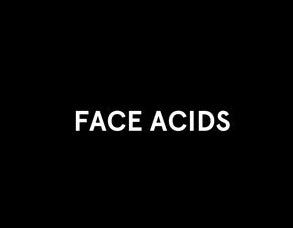
Face Acids for Skin Health
In the quest for youthful, glowing skin, face acids have emerged as powerful allies in skincare routines. These compounds, often derived from natural sources, offer a plethora of benefits, ranging from anti-aging effects to enhanced skin clarity. This article explores the various types of face acids, their specific benefits, and how they can rejuvenate your skin while addressing common skin concerns.
What Are Face Acids?
Face acids are chemical exfoliants that help to slough away dead skin cells, promote cell turnover, and improve skin texture. They can be categorized primarily into two groups: alpha-hydroxy acids (AHAs) and beta-hydroxy acids (BHAs). Each type has unique properties and benefits, making them suitable for different skin types and concerns.
1. Alpha-Hydroxy Acids (AHAs)
AHAs are water-soluble acids derived from fruits and milk. They are renowned for their ability to exfoliate the skin's surface, making them ideal for treating dry or sun-damaged skin.
Benefits of AHAs:
- Exfoliation: AHAs help to remove dead skin cells, revealing fresh, vibrant skin beneath.
- Anti-Aging: Regular use can reduce the appearance of fine lines and wrinkles by promoting collagen production.
- Improved Skin Tone: AHAs can help fade dark spots and hyperpigmentation, leading to a more even complexion.
Sources:
- Glycolic acid (derived from sugar cane)
- Lactic acid (derived from milk)
- Mandelic acid (derived from bitter almonds)
2. Beta-Hydroxy Acids (BHAs)
BHAs, such as salicylic acid, are oil-soluble and can penetrate deeper into the pores. This makes them particularly effective for oily and acne-prone skin.
Benefits of BHAs:
- Acne Treatment: BHAs help to unclog pores and reduce inflammation, making them effective for treating and preventing acne.
- Exfoliation: Like AHAs, BHAs also promote cell turnover but can reach deeper layers of the skin.
- Anti-Inflammatory Properties: BHAs reduce redness and irritation associated with acne and other skin conditions.
3. Other Notable Face Acids
- Azelaic Acid: Known for its antibacterial properties, azelaic acid is effective for treating acne and rosacea while also brightening the skin.
- Kojic Acid: Often used for its skin-lightening properties, kojic acid helps to reduce hyperpigmentation and even skin tone.
- Ascorbic Acid (Vitamin C): This powerful antioxidant helps to combat free radicals, brighten the skin, and promote collagen synthesis.
Medical and Regenerative Benefits of Face Acids
1. Treatment of Skin Conditions
Face acids have been shown to be effective in treating various skin conditions. For instance, salicylic acid is widely used for acne treatment, while azelaic acid is effective for rosacea and post-inflammatory hyperpigmentation.
2. Enhancing Skin Regeneration
Regular use of face acids can promote skin regeneration. By encouraging cell turnover, these acids help to reveal fresher, healthier skin, making them invaluable in anti-aging skincare regimens.
3. Boosting Collagen Production
Many face acids, particularly AHAs like glycolic acid, stimulate collagen production, which is crucial for maintaining skin elasticity and firmness. Increased collagen can diminish the appearance of fine lines and sagging skin.
Beauty Benefits of Face Acids
1. Glowing Skin
One of the most immediate benefits of using face acids is the enhanced radiance they bring to the skin. By removing dead skin cells and promoting cell renewal, face acids can result in a brighter, healthier complexion.
2. Better Product Absorption
Exfoliating with face acids can improve the absorption of other skincare products. When dead skin cells are removed, active ingredients in serums and moisturizers can penetrate more effectively, maximizing their benefits.
3. Customized Skincare Routines
The versatility of face acids allows for tailored skincare routines. Depending on individual skin concerns—be it aging, acne, or dullness—different acids can be integrated into daily regimens for optimal results.
How to Choose the Right Face Acid
Selecting the appropriate face acid largely depends on your skin type and specific concerns:
- Oily or Acne-Prone Skin: Opt for BHAs like salicylic acid or azelaic acid.
- Dry or Sun-Damaged Skin: AHAs such as glycolic or lactic acid are excellent choices.
- Sensitive Skin: Consider gentler acids like mandelic acid or lower concentrations of AHAs.
Pro-Tips for Use
- Patch Test: Always patch test a new acid to ensure it doesn’t irritate your skin.
- Start Slowly: Begin with lower concentrations and gradually increase usage as your skin acclimates.
- Sunscreen is Essential: Many face acids can increase sun sensitivity, so applying sunscreen daily is crucial.
Conclusion
Face acids are transformative ingredients in skincare that offer a multitude of benefits, from treating specific skin conditions to enhancing overall skin health. By understanding the different types of face acids and their unique properties, you can make informed choices that lead to healthier, more radiant skin.
Sources:
1. American Academy of Dermatology - Exfoliating Acids Link
2. Cleveland Clinic - Skincare Ingredients to Know Link
3. Mayo Clinic - Skin Care Tips Link